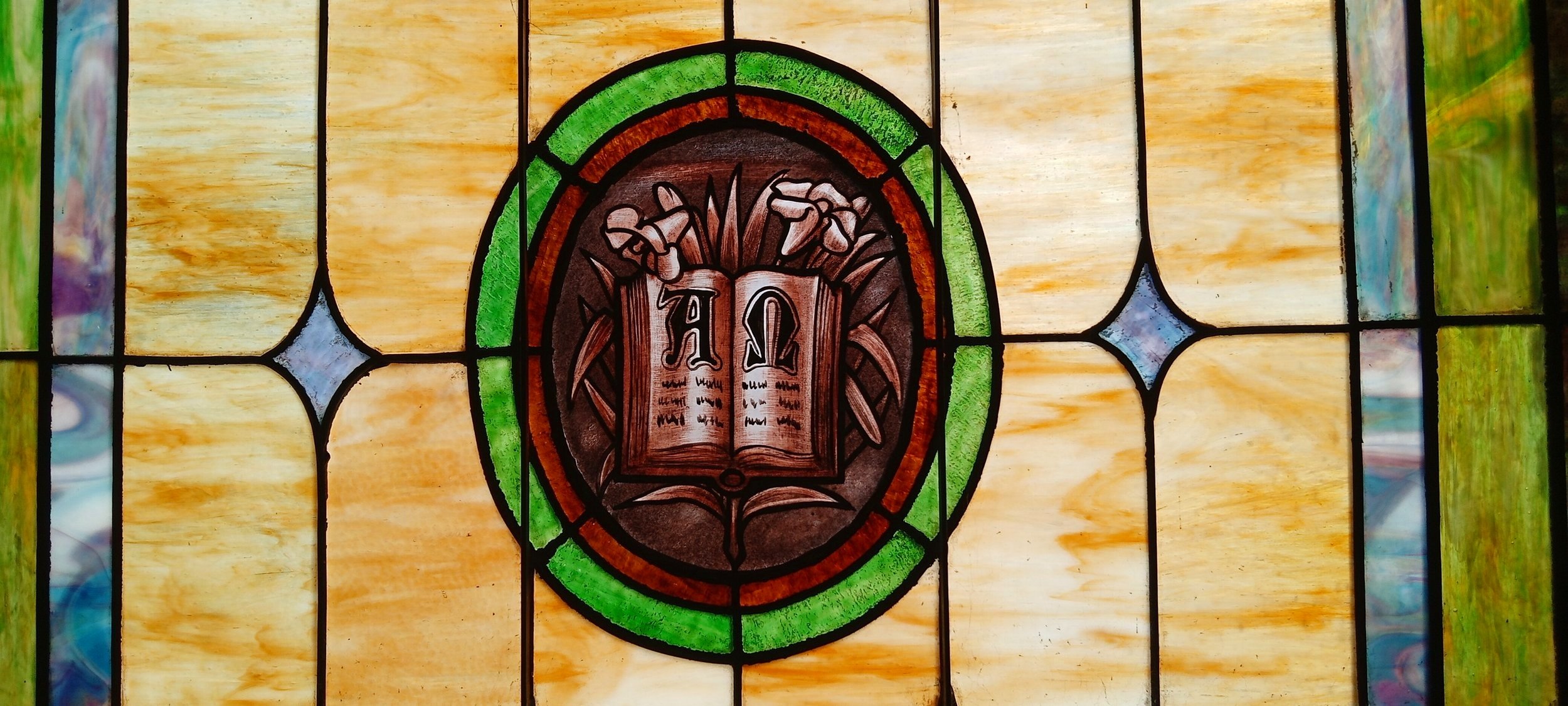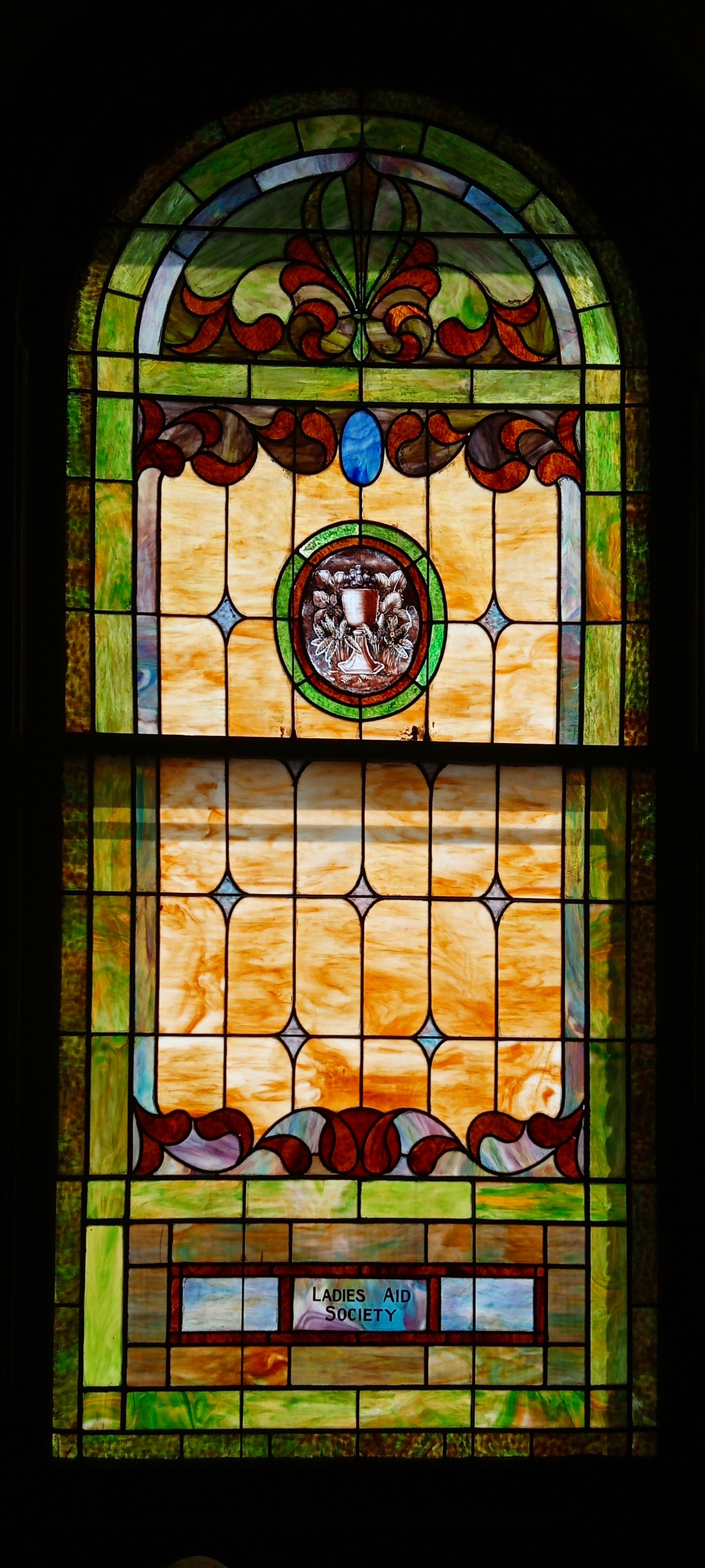Column: The majesty of the stained glass at St. Stephen UMC of Lexington
{All Photos By: Clarence-Vernon Hargrave/Davidson Local}
St. Stephen United Methodist Church in Uptown Lexington is adorned with numerous colorful stained glass windows that have a very regal presence and a story of their own.
The National Register of Historical Places in Davidson County’s website boasts the following information about the history of these remarkable stained-glass windows.
St. Stephen United Methodist Church is locally significant for African American ethnic heritage. The congregation has played an important role in the religious, social, and political life of Lexington’s Black residents from its formation in 1868 until the present. The 1921 construction of a new sanctuary and reuse of the 1892 sanctuary as a classroom wing manifest the congregation’s resilience, growth, and prosperity. St. Stephen UMC is the oldest Black congregation in the Lexington District of the Western North Carolina Conference of the United Methodist Church, and is further distinguished by occupying Lexington’s oldest extant African American sanctuary of any denomination. Throughout the twentieth century, the congregation undertook community service projects and during the 1960s, the church became a forum for civil rights movement meetings and planning sessions. St. Stephen UMC is also significant under Criterion C for architecture as an intact example of Colonial Revival-style early- to mid-twentieth-century ecclesiastical architecture.
The sanctuary has a traditional front-gable form and a projecting pyramidal-roofed entrance and bell tower. In addition to its symmetry, Colonial Revival stylistic elements include round- and flat-arched door and window openings, double-hung stained-glass windows with foliate and geometric motifs.
The interior contributes to the overall high integrity. St. Stephen UMC meets Criteria Consideration A as it derives its primary significance from its architectural style and historical association with Lexington’s African American community.
The period of significance begins with the 1921 expansion and remodeling and continues until 1971.
Original double-hung stained-glass sash displaying foliate and geometric motifs illuminate the 1921 sanctuary. Four south elevation and two north elevation windows have round-arched double-header course lintels.
In the hip-roofed one-story north wing, flat-arched lintels capped with corbelled header courses top the rectangular double-hung stained-glass sash at the west elevation’s center as well as two matching sash and the replacement single-leaf six-panel door on the north elevation.
Congregation members donated the stained-glass windows in 1921 in honor of Annie E. McRary, Mary and Richard Ayers and church trustees Lewis H. Albright, Roscoe C. Crawford, Coston L. Douthit, Hampton M. Oliver, H. Lewis Payne, Robert B. Russell and Charles M. Wooten.
Many congregation members lived and worked near the church; others resided on farms outside the city limits. City directories revealed some information about the church trustees honored on a stained-glass window in the 1921 sanctuary. Roscoe C. Crawford worked at Lexington Chair Company and lived with his wife Ethel and son Kenneth, a student at 115 East Third Street. Coston L. Douthit, current pastor Arnetta Beverly’s great-grandfather, was employed at C. M. Thompson Sons, a building supply company at 109 East Second Avenue. He lived with his daughter Lillie, a domestic, at 209 North Pine Street in 1928. Charles M. Wooten worked in a general store at 214 East Second Avenue in 1928 and as a janitor at Davidson Hospital in 1937. He resided at 110 Raleigh Road with his wife Florence. Lewis H. Albright, a plasterer, and his wife Mary lived at 402 Greensboro Road. Robert B. Russell, a fireman for the graded schools, and his wife Essie resided at 308 East Fourth Street. Hampton M. Oliver was a porter for the Winston-Salem Southbound Railway. Henry Lewis Payne, a janitor at the Commercial Bank of Lexington, and his wife Jessie lived at 106 Raleigh Road.
St. Stephen UMC welcomes you to see the beautiful stained glass in person by joining them on Sundays at 11:00 AM for services.
All are welcome.






